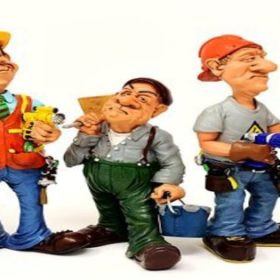[ux_banner height="500px" bg="310" bg_pos="100% 55%" target="_blank"]
[/ux_banner]
[caption id="attachment_508" align="alignnone" width="800"]

Tools & Equipment's online store[/caption]
& Power Tools Recommendations
Whether you’re a weekend warrior or beginner do-it-yourselfer looking to save on the cost of hiring a professional, using power and hand tools to do small (and large) jobs around the house is something the majority of Americans have done and will continue to do. Power tools make lighter work of difficult jobs and are essential to those in the skilled trades.
It’s important to keep in mind that many tools can be quite dangerous when used incorrectly or without the right amount of knowledge or skill. Even with proper training, even the most expert tradesmen can still have an accident.
Possible injuries that can be caused by tools include cuts, crush injuries, bruises, pinches, electrical injuries including electrocution and fires, and even death in extreme cases.
The Consumer Product Safety Commission’s (CPSC) National Electronic Injury Surveillance System (NEISS) estimates that there were more than 12,000 reported cases of injuries to children under the age of 18 caused by power tools such as sanders, joiners, drills, etc. that were treated in hospital in the United States in 2013.
The number of actual injuries caused by power tools is bound to be quite higher than this, as the data from the CPSC only looked at those injuries which resulted in medical treatment at a participating hospital, and minor injuries were likely treated at home or another medical treatment facility not included in the reporting data. In fact, it’s estimated that up to 400,000 injuries or hospitalizations occur every year as a result of power tools.
Hand & Power Tools Recommendations
When purchasing
- For the most part, safety standards for tools have been created by a mix of consumer groups, government agencies, producers, retailers, and suppliers and they’re completely voluntary on the part of manufacturers. Look for a sticker on your item that tells you it’s been approved by CSA, NSC, ANSI, IEC, UL, CPSC or some other such safety association. Be cautious of purchasing products that are made in China, as regulatory standards are much different there than in the United States.
- Look for safety features such as automatic lockout, enclosed or covered blades, and/or a dust collection kit. Another key safety feature to look for in a power tool is whether or not it is double insulated, which will help protect the user from the risk of electrical shock.
- If your tool came with a warranty or registration card, be sure to complete the form and mail it in to the manufacturer. This way, you’ll be notified of any recalls or other safety information in the event of a problem with your model. Surveys done by Consumer Reports National Research Center show that most people seldom or never take this essential safety step.
Hand & Power Tools Recommendations
When operating
- Do not operate tools when over tired or if you’re under the influence of drugs or alcohol as the risk of injury will increase.
- Tie back any long hair and remove loose clothing or jewelry. If a tool calls for specific safety equipment, such as glasses or a hard hat to be worn when operating, do so. If you’re going to be using a loud tool for an extended period of time, consider using earplugs or noise muffling headphones in order t-o protect your hearing. You might also need a dust mask, depending on the tool you’re using.
- Ensure the power is turned off to any tool before plugging it in or installing a battery pack.
- Be aware of any safety symbols or warning icons on your tool and follow the recommendations for safe operation. Only use a tool for its intended job.
- When using a saw, ensure you do not use your hands to push material through to the blade, but rather use another piece of ‘junk’ wood to push an item through.
- If necessary, use clamps to hold material in place. Always wait for all moving components of a power tool to stop before removing clamps or changing any parts.
- Keep all tools out of reach of children, and do not operate near wet or otherwise dangerous surfaces. A safe work area is essential.
- If using an extension cord, ensure it is out of the way and not a trip hazard. Outdoor use of power tools calls for an outdoor-rated cord. And, don’t forget that 3-pronged (grounded) tools must be plugged into the proper outlet – never under any circumstances should you remove the third prong or modify a plug in any way.
Hand & Power Tools Recommendations
When cleaning
- Unplug your power tools before cleaning in order to prevent any nasty surprises. Take them to a professional if you are nervous or unsure about cleaning them yourself. Maintaining your tools properly can help prolong their life and keep them safe for many years to come.
- Take extra care when cleaning or changing out the blades of cutting tools such as saws. They will be especially sharp and can easily cut you.
- Always read and follow the manufacturer’s instructions for use and cleaning of your tools, and don’t hesitate to contact them if you should have a question about something specific that isn’t covered in your user manual.
In case of accident
- In all cases of injury or accident, stop using the tool immediately and when possible, disable the power source.
- In case of a cut, pinch or other mild injury, immediately remove yourself from the area and seek first aid treatment when necessary.
Labels: Hand - Power- Tools, Hand Tools
 Risks associated with lifting operations[/caption]
Risks associated with lifting operations[/caption] Safe handling of tools[/caption]
Safe handling of tools[/caption] Tools & Equipment's online store[/caption]
Tools & Equipment's online store[/caption] Tips for Hand and Power Tool Safety[/caption]
Tips for Hand and Power Tool Safety[/caption]